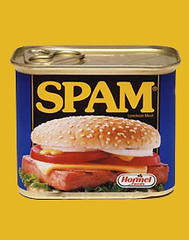
Cathy Brooks, former director of business development for Seesmic and current president of Other Than That Consulting, had the best intention. Rather than scrap dozens of pitches seeking to schedule meetings at the Consumer Electronics Show (CES) in Las Vegas, she responded with a note pinpointing precisely what types of topics in which she has an interest.
You can read a copy of her response here. Not one of the pitchers who received her response refined their pitch. Most of them, according to Brooks, responded with notes that ranged from snarky to downright rude. And a few of them blamed the list.
Do pitch lists still work in public relations?
The timing of Brooks' post couldn't be better for me, with only a few weeks remaining before I take to the classroom. Having another bad pitch story is always helpful for practicing and future public relations professionals. It takes some effort before most of them appreciate what public relations could be as opposed to what some people try to make it.
Sure, there is a time and place for mass distributed releases. That is the reason PR Web, PR Newswire, Businesswire, Web site media centers, and a host of other distribution vehicles exist. Some lists are fine too, assuming the public relations professional limits the content to legitimate news and narrows the distribution to specific interests, noting that travel writers might not be interested in stock performance.
Anything else is a waste of time and money because one extra hit on an obscure blog is almost never worth the 3,000 plus journalists and bloggers you damage a potential relationship with or lose all together (if you are lucky).
Imagine ... some pitchmen and women were paid top dollar to create a negative impression for themselves and the companies they represent. Worse, the impression they created will survive long after CES. Other bloggers and journalists on the list with similar experiences might mention the pitchers in a conversation to colleagues, pass on the company's next pitch (even if it's targeted), or even become biased against the companies.
This year, like every year, someone in my class will likely tell me that pitch lists are part of the business — their clients demand pitch counts, column inch measurements, and the specific reason some publications decided to pass. I am sure some of them do, but considering most would fire an employee off the line for speaking rudely to a single customer, some honest consultation might be in order.
Truth be told, Brooks not only tipped pitchers as to what she was looking for, she saved them time and money. Considering public relations firm charge between $100 and $500 per hour, Brooks saved every company she rejected somewhere between $300 to $1,500 (assuming there were lunch offers and promotional samples in the mix) by not wasting their time at CES (so they could perhaps meet with someone else) and some untold amount if they apply what she taught them for free.
Lists, leads, qualified contacts, associations, and relationships.
1. Lists. Mass distribution like wire services aside, lists work best when they are vetted for specific interests. Journalists tend to ignore them, but the right well-written news story from the right company might be worth it. Bloggers tend to be less accepting of the practice, unless they consider it a big break for their blog. In terms of new business, it includes people within a specific industry.
2. Leads. Lead lists tend to do exactly that. Instead of a generic list including everyone in attendance, they are vetted by special interest. For example, if someone writes about or has an interest in smart phones, reaching out to them because you have a smart phone topic might be worthwhile.
3. Qualified Contacts. Even better than lead lists, qualified contacts are identified by specific interests within a special interest. Using the smart phone analogy, it means knowing who is most interested in the iPhone and Droid (and why). Basically, Brooks gave everyone who pitched her what it takes to make her a qualified contact.
4. Associations. These people, even if they are included on a list, are professionals who the public relations person has had past or regular contact with over a variety of subjects. They don't have to pitch them, per se, because they already know exactly what stories these journalists or bloggers have an interest in. It's likely a mutual arrangement.
5. Relationships. Surprisingly enough, some public relations firms claim to have them but don't really have them. These relationships border on friendship, which allows them to call or e-mail a handful of people just to brainstorm potential stories without fear of alienation. It's mutual too. The PR professional would never be put off by being told "no" or that the story idea borders on silly.
The question more business owners ought to ask is how much emphasis does their public relations firm place on each tier (based on performance not lip service). Ideally, the best models would look like a pyramid, with the weight stacked toward real relationships. In reality, most firms talk about themselves as having a diamond-shaped model, but they tend to operate like an inverted pyramid.
So how can a business person tell the difference? Instead of measuring column inches with "earned media" values, record each "hit" in the appropriate column: republished portions of "as is" news releases; rewritten news releases; inclusion in an original story; stories that required interviews; off-release topic stories. You might be surprised by what you find. They match the models almost exactly.





















